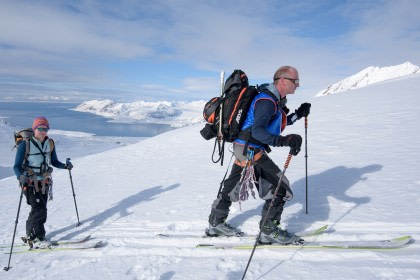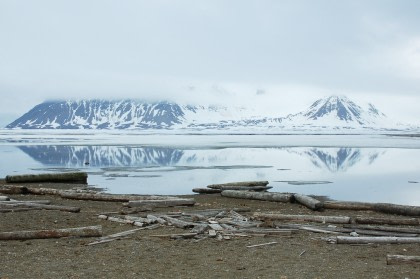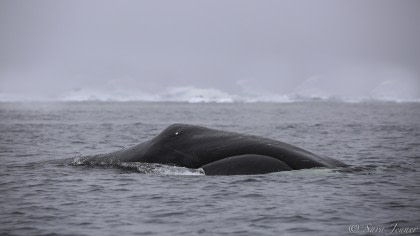The Arctic apex predator that is the polar bear
As apex predators, polar bears are at the top the Arctic food chain. Only humans pose a threat to this massive and majestic species. But all it takes is one look to understand why so many people book Arctic trips in the hope of spotting a polar bear in the wild.
Incredible as it is to see these animals, however, their position atop the far-north food chain requires us to be very careful when venturing into their territory. That's why we have strict safety policies when embarking on our Arctic cruises (which we will discuss at the end), not only for the sake of our staff and passengers but also for the polar bears.
Nonetheless, there's nothing like seeing a polar bear in its ruggedly beautiful home. If you decide to join us on an Arctic cruise and are lucky enough to see a polar bear in person, here are a few polar bear facts to complement that awe-inspiring experience.
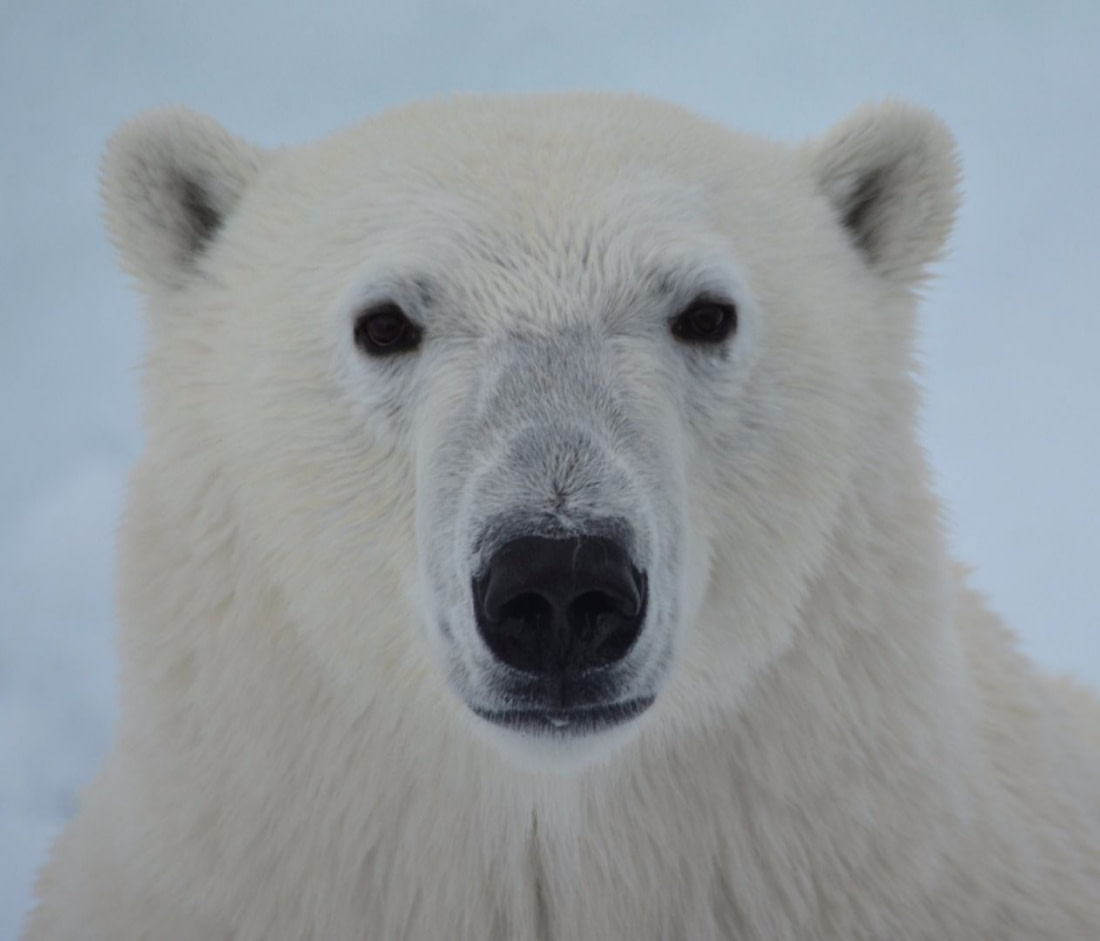
Photo by Gareth Lewis-Oceanwide Expeditions
Polar bear size between the sexes
Though they are the largest species of bear, there is a large difference in size between male and female polar bears. Males weigh between 350 and 800 kg (770 and 1,750 pounds) and females between 150 and 300 kg (350 and 650 pounds). Polar bear weights fluctuate throughout the year, depending on the season. Female polar bears can often double their weight between early spring and late summer. Polar bears have adapted to the Arctic well, with a small head to minimize heat loss, short fur-covered ears, and more powerful claws compared to other types of bears. They also have longer teeth and sharper molars that aid in their meat-heavy diet.
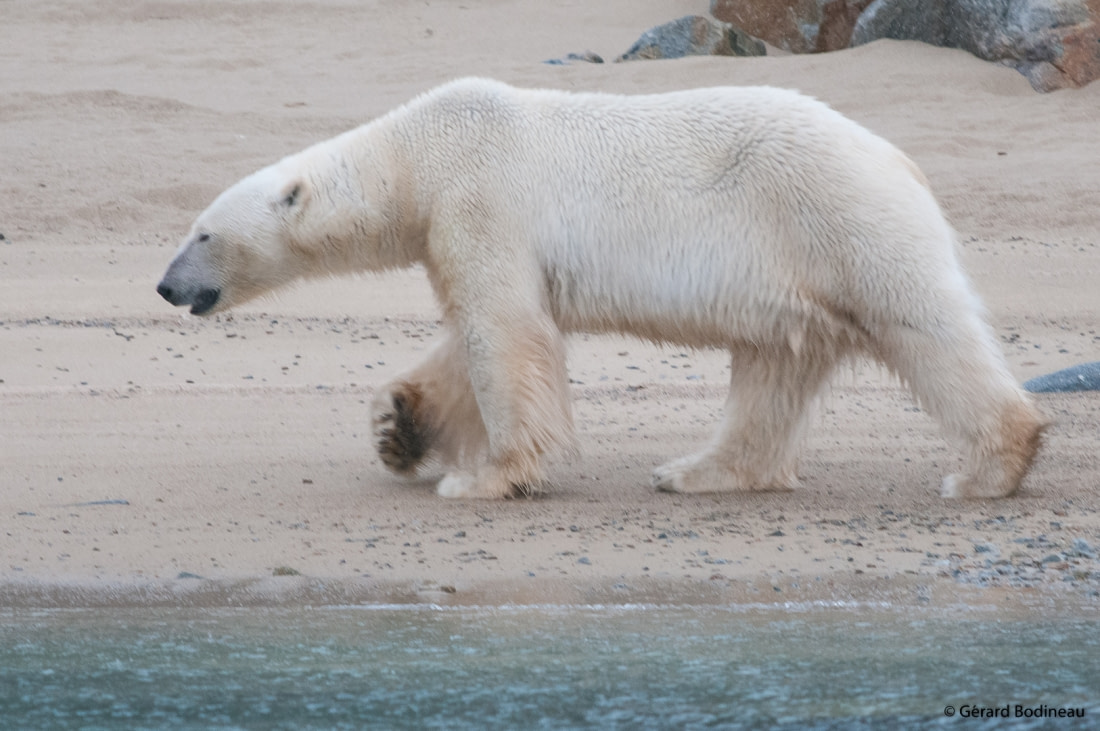
The polar bear's most common prey
When you're at the top of the food chain, you can afford to be picky. But polar bears will actually eat just about anything they can catch. Their preferred meal, however, is seal – specifically ringed seals and bearded seals. On the sea ice, they eat young walruses, Greenland seals, hooded seals, beluga whales, and narwhals. On land, polar bears catch reindeer, musk oxen, rodents, young seabirds, and bird eggs. They even feast on the carcasses of whales that have washed ashore. During leaner months, polar bears also have a taste for non-meat foods, including berries, grass, and seaweed.
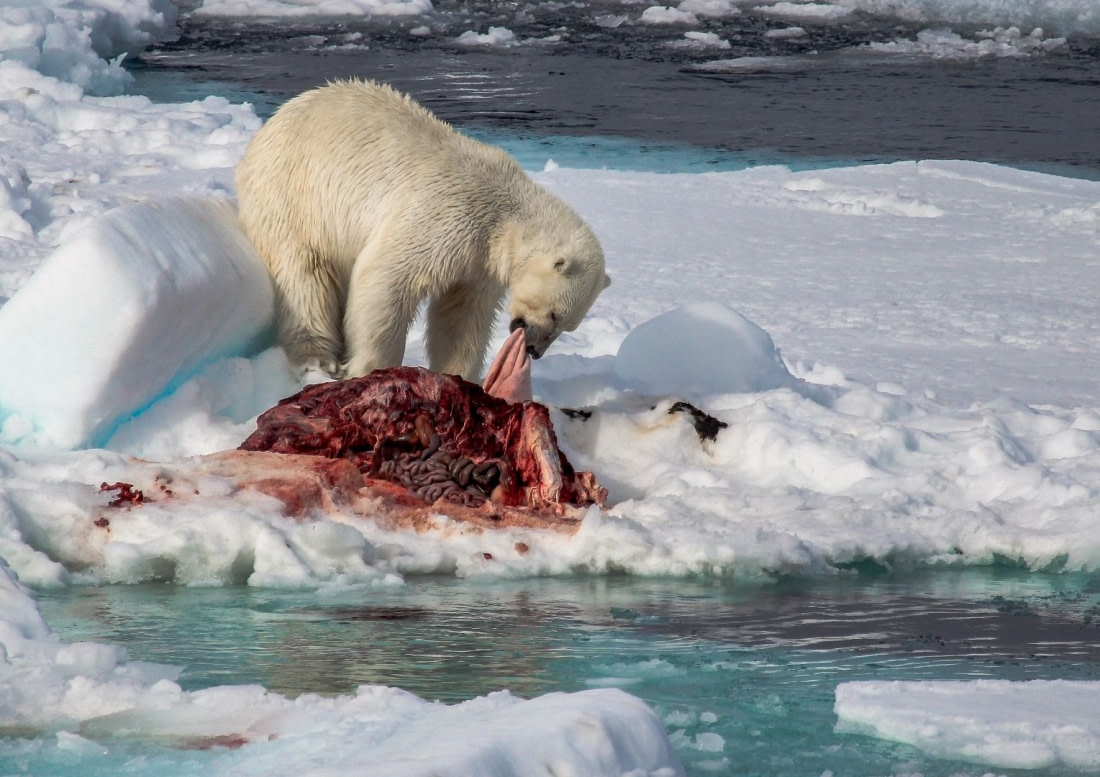
Photo by Tom Curfs-Oceanwide Expeditions
Polar bear hunting rituals
Polar bears can run quickly for their size, but they do not generally rely on speed for catching their prey. That consumes too much energy. Instead, polar bears tend to approach their prey stealthily, using the wind direction to avoid being detected by scent. They often hunt at seal breathing holes, waiting for hours for a seal to appear and then pouncing when it surfaces. Being at the top of the food chain means hunting smart, not hard.
The lifespan and breeding of polar bears
In the wild, polar bears normally live 20-30 years. Both males and females mature at four to five years old. Females often give birth to their first litter of cubs when they reach maturity, while males do not usually start mating until they are eight to ten years old. From April to May, young male polar bears find females by their scent. This usually leads to bloody fights between competing males, after which victors mate with females.
Once pregnant, females leave to eat as much as possible. In late September, they dig dens in the snow and enter a kind of hibernation (not official hibernation, as polar bears do not hibernate). About four to six months later, females give birth to one or two cubs who remain with her two to three years before leaving. Polar bear cubs weigh only about half a kilo (one pound) when born but grow rapidly due to the high fat content of their mother's milk.
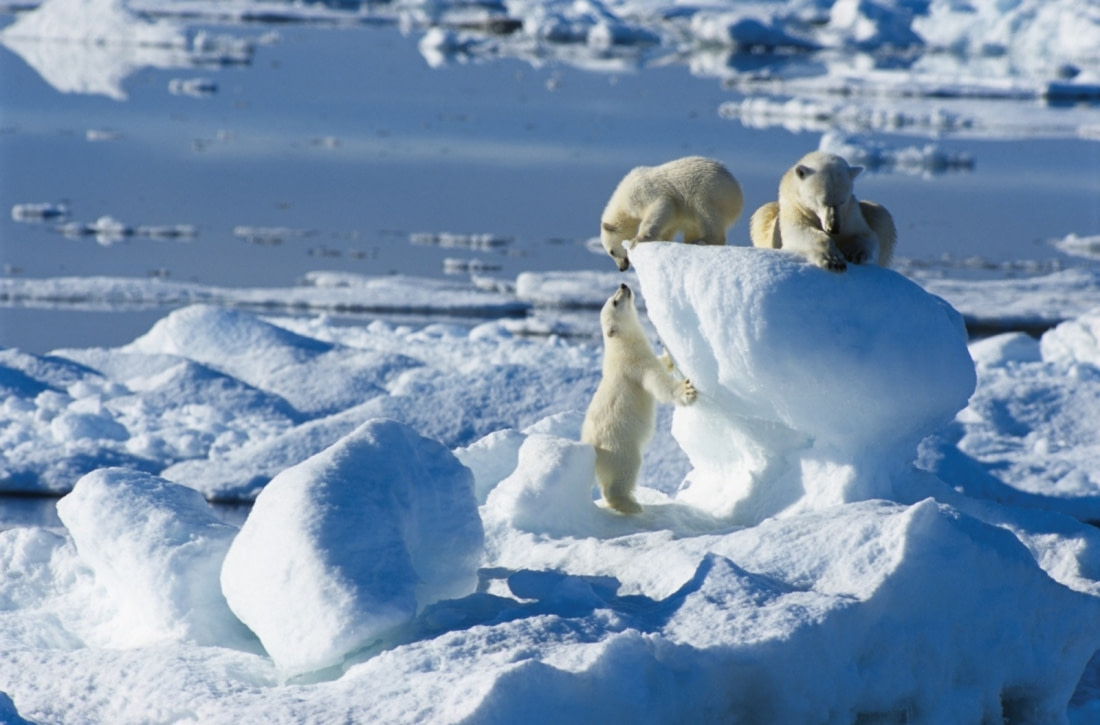
Photo by Rinie van Meurs-Oceanwide Expeditions
Polar bear populations and habitat
Polar bears are not a single large homogenous population that roams the Arctic in unison. Rather, groups of polar bears called "stocks" or "populations" are distributed throughout the Arctic. Since the 1960s, thorough research has been conducted by scientists to learn more about these populations, collecting information on demographics, population boundaries, movements, size, reproduction, and survival parameters. Research has found that polar bears do not live in large numbers and their reproductive ability is low.
Exclusively Arctic animals, polar bears live in the far north of Canada, Alaska, Greenland, Russia, and Northern Europe. We visit some of the most populated polar bear habitats in Svalbard and Franz Josef Land, where polar bears have vast hunting grounds called "home ranges." These ranges can extend for several thousand square kilometers / miles, by far outsizing every other bear hunting range.
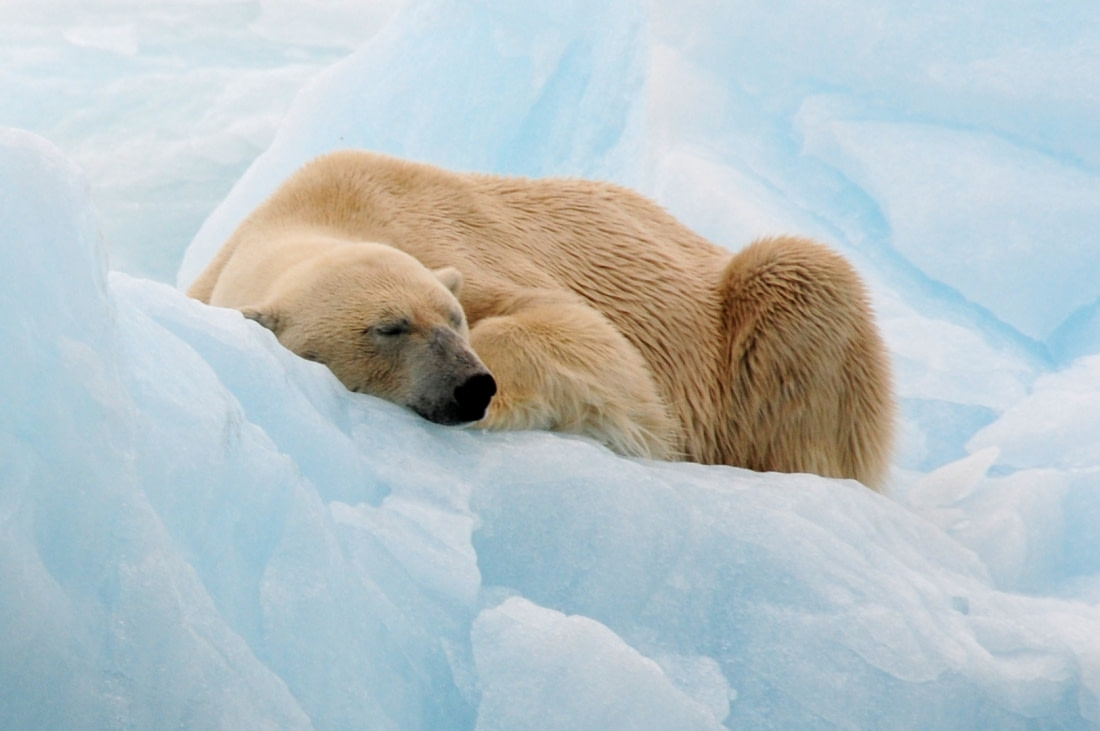
Technological advances in studying polar bears
Scientists often use satellites to follow individual polar bears and make inferences as to population movements and boundaries. Infrared technology is also useful in monitoring polar bears hidden beneath the snow. Aircraft as well as marine technology has likewise given scientists access to larger populations of polar bears than ever before.
To understand more about polar bears and how they are impacted by the changing Arctic environment, scientists have even isolated polar bear DNA from tracks left in the snow. According to the WWF, this method is an invaluable tool for conservation biology, as it is a less expensive and invasive way of tracking polar bear population size and health than previously used methods.
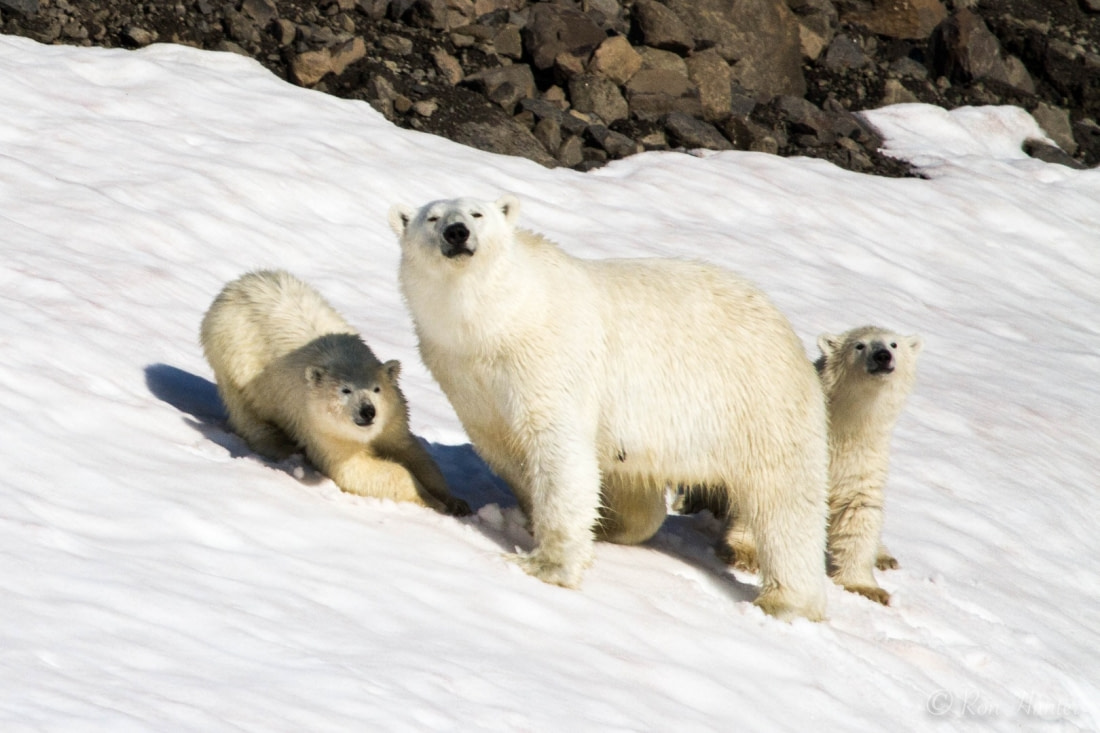
Polar bears and climate change
Both the polar bears you'll see on a Svalbard cruise as well as their prey have evolved over time. Both are dependent on sea ice for foraging, resting, and reproduction. As such, both polar bears and seals are key indicators of the effects of climate change on the Arctic environment. With global temperatures rising, polar bear populations are facing threats they've never encountered in recorded history. While it is not certain yet what exactly climate change will do to the polar bear, studies indicate it will have a negative effect on its populations.
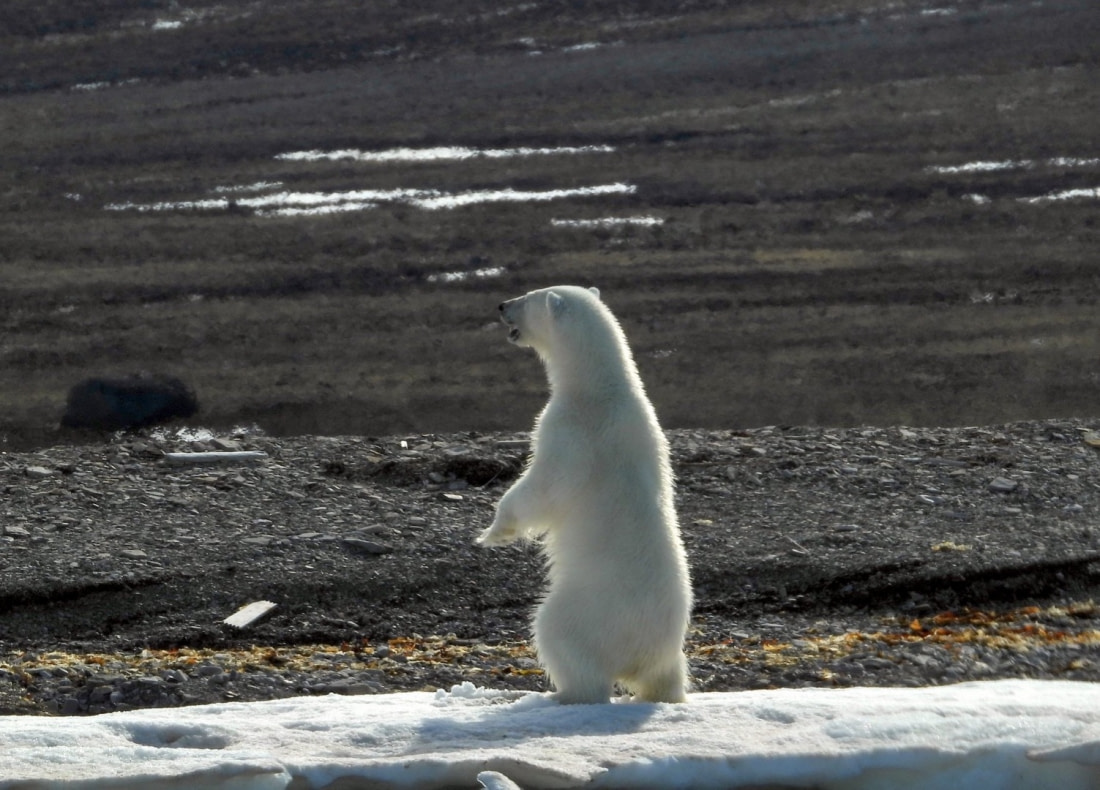
Likelihood of a polar bear encounter
We want to see polar bears from our ship, not when on land. For this reason, our guides thoroughly examine every landing sight from the vessel first, then from the Zodiacs, and then on shore before making any landing with passengers. We never land in an area where a polar bear has been sighted, both for the safety of our guests and colleagues as well as the polar bears. For more information about the safety protocol we follow with regard to polar bears, please see our video below.
Photo credit main photo: Josh Harrison Photography.

